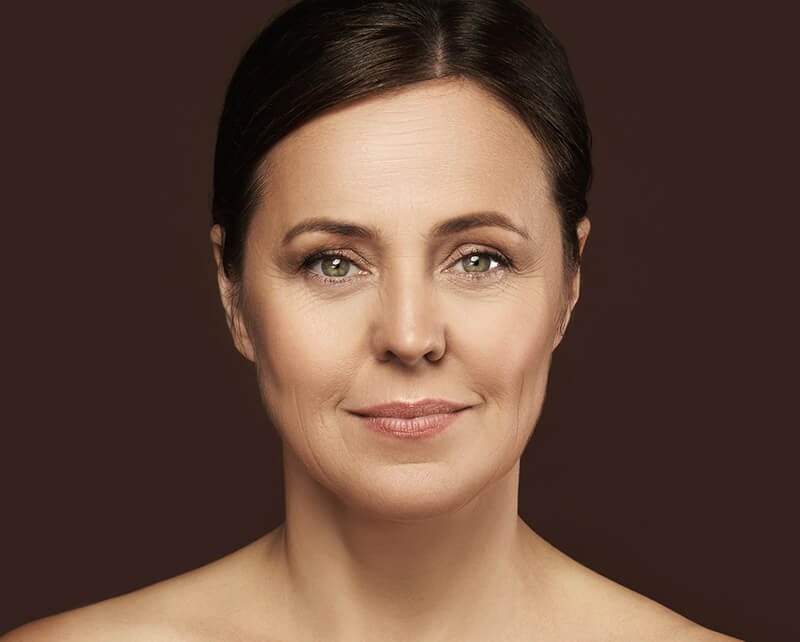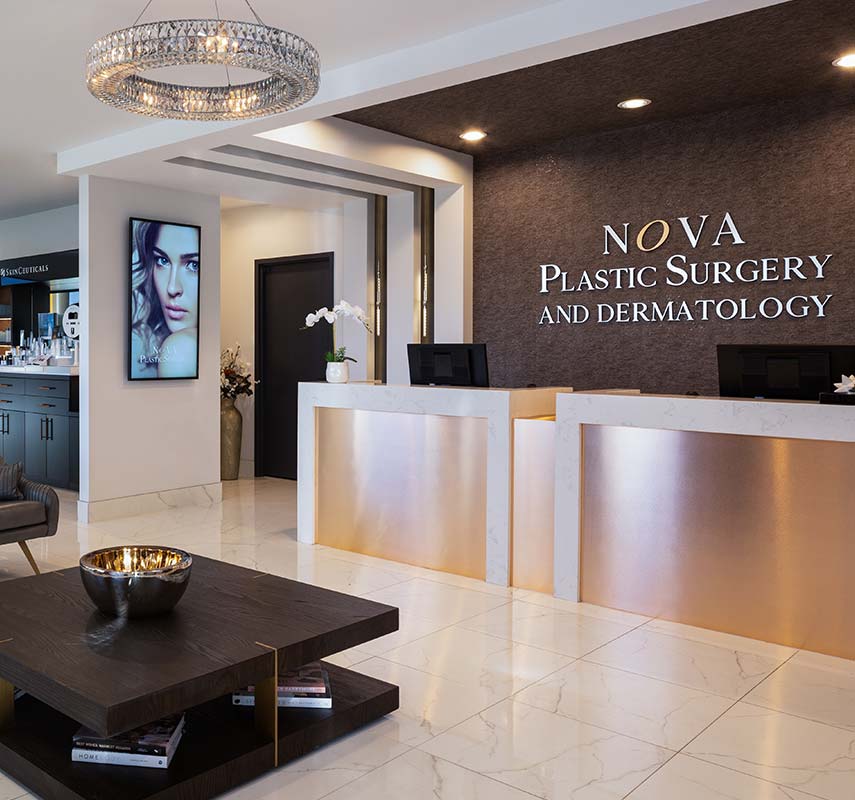
Brow Lift
What Is a Brow Lift?
A brow lift is also known as a forehead lift. It is a surgical procedure designed to remove deep creases that run horizontally across the forehead and vertical frown lines at the top of the nose. It can also help reposition sagging eyebrows (especially when combined with eyelid surgery) and drooping forehead skin.
Schedule a ConsultationWhy Get a Brow Lift?
Our society places value on being energetic, fit, and youthful. Drooping brows and deep forehead creases can make you look tired, older than you are, or even perpetually grumpy.
Creasing in the forehead or drooping of the brows can be caused by genetic predisposition, gravity, the natural aging process, and repeated facial expressions.
A brow lift will raise the level of the brows and tighten the skin of the forehead, making you look more alert and energetic. It can rejuvenate the face, especially when you combine a brow lift with a facelift. A brow lift can be especially helpful to patients whose low brow has begun to hood the upper eyelids, which can cause discomfort.
Along with a facelift, a brow lift pairs well with eyelid surgery, mini-facelifts, neck lifts, and non-surgical procedures like dermal fillers or Botox treatments.

Am I a Good Candidate?
Good candidates for brow lifts will be in general good health and will be non-smokers, or will be willing to quit smoking for six weeks before and after surgery. Since a low brow can be caused by the aging process or by genetic factors, there is no “right” age for a patient undergoing this procedure. Candidates will have sagging or lowered brows and deep furrows across the forehead and/or between the eyebrows.
It is important that candidates for this procedure have realistic expectations of the outcome. They should be pursuing the surgery for their own reasons, and not to satisfy the desires of someone else in their life.
What Types of Brow Lifts Are There?
A coronal brow lift is also known as an open brow lift, and it is the classic form of the surgery. It requires an ear-to-ear incision, and involves the removal of excess skin to reposition the brow. The results are the longest-lasting of the two forms of brow lift, but the recovery time is longer.
Endoscopic brow lifts utilize a series of smaller incisions, and the use of a small surgical camera to guide the surgeon. The recovery time is shorter because of the smaller incisions, but results may not be as long-lasting for some patients.
How Do I Prepare for a Brow Lift Surgery?
Dr. Nukta will evaluate your facial features and desired outcome to help create your surgical plan, which may include other procedures in addition to the brow lift.
Dr. Nukta will order lab tests and possibly a physical with your general practitioner, to be sure you’re in good shape before surgery. He may adjust any medications you are taking, along with any herbal supplements that might interfere with your recovery process. If you smoke, you will need to stop at least six weeks before the surgery. Smoking can slow the healing process and make your recovery time longer.
Patients with very short hair might want to consider growing it out before surgery, to better hide the incision while it heals. It’s also a good idea to color your hair before surgery if you are in the habit of doing so, because you won’t be able to color it again until the incision heals.

How is a Brow Lift Performed?
Coronal Brow Lift
A coronal brow lift is the traditional method of performing this procedure. It involves an incision that runs from one ear, up through the hair-bearing scalp, and along to the other ear. The incision will be hidden behind the hairline once it heals. Once the incision is made, the surgeon will remove a strip of excess skin and reposition the muscles and skin so the brows are in a higher position. The incision will then be closed.
Endoscopic Brow Lift
An endoscopic brow lift is done with the use of an endoscope, which is a small surgical camera. This lift involves a series of smaller incisions along the scalp line, which gives you a shorter recovery time than a coronal brow lift. The surgeon will insert the endoscope through one incision, and will use another to insert surgical tools. With this lift, the excess tissues are anchored into a higher position using surgical screws or glue. The incisions are then closed.
If you are getting any complimentary procedures such as eyelid surgery or a facelift, those will be performed as well. With both forms of brow lift, a surgical drain may be placed temporarily. They will be removed at a later date during a post-op check.
What is Recovery Like?
When you wake up from the surgery, there may be some grogginess as the anesthesia wears off.
Your forehead will be bandaged, and there might be drains present to prevent fluid build-up. The drains will be removed in a day or two. If you have any discomfort, your surgeon can prescribe medication to help with that. You can expect some bruising and swelling within the first three days after surgery, but it will start to go down after that. Some patients may also have some itching along the incision.
You should be able to go back to work within about 10 days, depending on the level of strenuous activity involved. Sutures and any temporary screws that are anchoring the skin in place will be removed in about 5 to 10 days, depending on what type of brow lift you had. You’ll be able to wash your hair and shower normally (but gently) after two days.
Avoid wearing makeup until the surgeon gives you the go-ahead. Sleeping on several pillows will help alleviate swelling. Be sure to follow all post-operative instructions about changing dressings in order to prevent infection. Wearing button down shirts for the first few days after surgery can be helpful because you can avoid having to pull something over your head.
If you had an endoscopic brow lift, you will likely be back to normal more quickly than if you had a coronal brow lift. Either way, you should be completely recovered within four weeks. This time frame can vary if you are having other procedures performed at the same time as your brow lift.

What Are the Complications or Risks Associated With a Brow Lift?
This can include bleeding, infection, nerve damage, visible scarring, hair loss, asymmetry of the forehead or brows, the need for revisional surgery, skin discoloration, abnormalities in the eyelids, and unhappiness with the results.
The best way to lower your risk for developing complications is to select a Board Certified Plastic Surgeon to perform the brow lift. Board Certified surgeons have the appropriate training and expertise required to give you the best outcome possible. Properly qualified surgeons follow all necessary sterilization procedures to minimize infection, and use high quality surgical facilities.
You will also need to follow your surgeon’s instructions carefully in order to minimize risks. This includes your pre-and-post-operative instructions like refraining from smoking and staying out of the sun for the directed period of time. These guidelines will help minimize infection and other complications.
When Will I See My Final Results?
However, your tissues may continue to settle for a few months after the surgery, and the incision will begin to fade into an essentially invisible scar behind the hairline. This process can take up to six months, though the time frame will vary from patient to patient.
